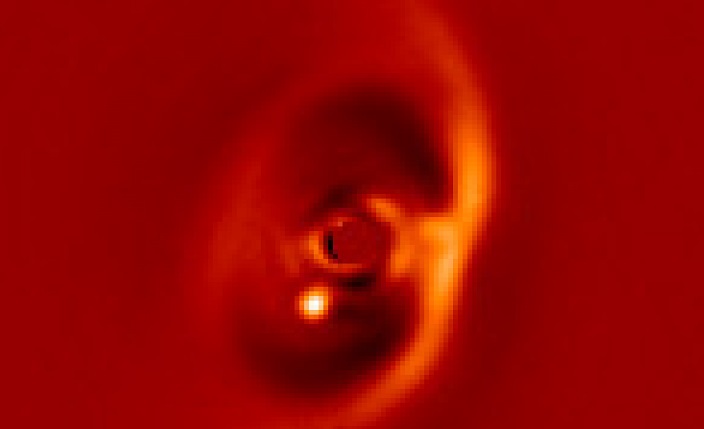Astronomers have witnessed the formation of a new planet — that is around 370 light years away — and snapped a one-of-its-kind photo of the birthing process.

The detailed image was taken by one of the most powerful telescopes on Earth and shows the extremely young planet taking shape in the middle of the disc of gas and dust around its young star.
Scientists from the Max Planck Institute for Astronomy, working with the European Southern Observatory’s Very Large Telescope in Chile were able to capture an image of the planet, that is roughly a few times the mass of Jupiter (you could put 11.2 Earths side-by-side to match the diameter of Jupiter), in the midst of forming around a younger star.
The planet’s surface temperature is around 1,000 C, making it much hotter than any planet in our own solar system.
“This planet is so hot because it is very young,” Michael Meyer, an astronomer at the University of Michigan, told the L.A. Times. “It is still converting potential energy of contraction into heat at its surface. Jupiter has been doing this for billions of years, and radiating that energy away as it cools over time.”
WATCH: Astronomers find new evidence of ninth planet in our solar system

The star, named PDS 70, is thought to be around 5.4 million years old, which is very young in a cosmological timescale (the Earth is 4.5 billion years old). The astronomers said the planet has to be younger than the host star and sits about 1.86 billion miles away from it.
The scientists said hints of baby planets have been detected before, but astronomers weren’t sure whether those observations might simply be features in the swirling dust.
“This confirms our picture of planet formation, namely that planets, while accumulating material from their environment, carve a gap in the disk,” Miriam Keppler, an astronomer at the Max Planck Institute for Astronomy in Heidelberg, Germany, and the leader of the team, told NBC News.
“While discovering how planet formation takes place around other stars, we learn as well about the history of our own solar system.”
WATCH: European astronomers capture image of newly forming planet






Comments